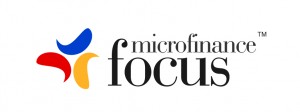Donor Coordination: a Vehicle for Learning and Innovation
Renee Chao-Beroff (PAMIGA): Donor coordination is a constraint, but allows one to do larger, more innovative projects. But most importantly, it is a vehicle for sharing experiences and learning.
Michael Knaute (Oxus/Convergences): Grants are still needed in microfinance, to push the boundaries and do what commercial funds cannot, such as target the ultra-poor. The role of donors is critical to developing innovative solutions and developing new markets through building institutions and infrastructure. Coordination among donors is also necessary — grants need to be big. We should avoid disseminating micro-grants that are uncoordinated with each other.
Audience questions/comments:
- (Comment from audience): having clear leadership of a multi-donor project is critical, but also donors must also have more risk appetites to take on more innovative projects.
- Edvardas Bumsteinas (EIB): the times are changing. In the past we had more public agencies and organizations. These days we have more private foundations.
- (Comment from audience): dominant donor is very important to set the direction and bring the rest of the donors along. Donors must also have a shared understanding of the market and what is needed. Often donors approach the situation with a pre-existing product rather than first evaluating the market need. Especially in the case of a multi-donor project, this can be an obstacle.
- Blaine Stephens (MIX): many field institutions have a full-time staff position doing nothing other than reporting to external institutions, including donors. The presence of multiple donor projects, each with its own set of reporting requirements makes this more difficult.
- Lucia Spaggiari (Microfinanza Rating): understanding of social accountability and performance is critical and donors are perfectly positioned to push for increased transparency.
- (comment from audience): it’s important to agree on a common reporting platform. Having different reporting lines to each donor should be almost forbidden — we now have the MIX and other standard reporting platforms. Donors should be using that rather than unique set of reporting requirements.
Philippe Serres (AFD): the question of reporting is really important. It would be better to rely on standard reporting platforms, such as the MIX, for reporting purposes. However, we also have reporting that’s specific to the project that are not normally included in a standard reporting. So I think it’s important to incorporate standard reporting into the donor-client relationship where possible, but it can’t replace everything.
We’ve also had an opportunities to work with private funders, such as the Grameen Credit Agricole Foundation. Such public partnerships are a good way to leverage private funds, but with the understanding that there may be differences in expectations, risk appetite, timing of funding, and other issues. For example, public funds can also be used to take a more risky part of the project
Emmanuel Moyart (EU/ACP Microfinance): one aspect of coordination obstacle is in institutional procedures. For example, we have a very strict approach for non-disclosure of applicants and the selection process. So in a multi-donor project this can be a difficulty, since we’re not able to share this information that might be important for other donor partners. This may be something that’s difficult to overcome in the short-term.
Can donors share information on potential projects? Instead of each institution going through a difficult and costly selection process, sharing information across donors may be better. Why not have a single clearing-house for grant proposals?
Renee Chao-Beroff: there is a lot of need for sharing information and sharing knowledge. PAMIGA is working in two areas — consolidation of the sector. For example, in sub-Saharan Africa, there are too many small organizations that Central Banks cannot oversee sufficiently. This has important implications for regulatory capacity and market stability.
For example, MasterCard Foundation has taken a leading role to undertake initiatives to support mergers and consolidations. This is often seen as a risky endeavor, but MasterCard Foundation was willing to go there, at the same time requiring that the lessons and experience coming out of this program be published and shared with the sector.
The other area we’ve been involved in is in combining water and renewable energey with microfinance. This is a area that really can benefit from knowledge sharing across donors.
Philippe Serres: there has to be a principle of equality for evaluation of grant recipients, but it’s also important for donors with deep expertise in a particular area and on-the-ground presence to have a greater say in the process. It’s important to combine both types of approaches.
Audience questions/comments:
- Can project proposals that have been evaluated by one donor be shared with other donors? This would increase efficiency.
- Sometimes we see MFIs opening many branches in a short period, but without the controls in place.
Ivana Damjanov: in the case of our MicroLEAD program, which supports savings-led institutions, we have a special focus to make sure that growth is done sustainably.
Blaine Stephens (MIX): we should also learn from how information sharing takes place in other areas, not just microfinance. In healthcare systems, for example, the sharing of medical records has been an important part of improving the delivery of health-care. A doctor may have one set of health records, while another may have a different set. This creates inefficiency and reduces quality of overall care. There has been a big shift for digitizing medical records, so that each doctor can have a fuller view of the patient’s health.
Another example is the common university application that has recently been introduced in the US, where a group of universities have agreed to a set of common application standards, but incorporated them within individual requirements. Applicants no longer need to fill out pages and pages of the same information for each university, but focus on those requirements that are necessary for each.

